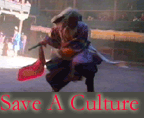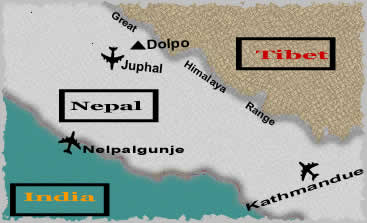|
||||||
 |
||||||
|
A Buddhist Principle It is right
way to serve and use self for benefit of others Cherishing others is the wisdom that make yourself happy. By doing so, peace prevail in your own life and in your environment!! Save A
Culture Limis are
ethanic Tibetan with intact unique Tibetan culture, which is is
serviving in the most remote area of northwestern Nepal. Kailashzone
and Antahkanara are working to save the unique culture of Limi people Tashi Kailash "to educate younger generation is an important responsibility for this generation. The children
of Limi I, therefore, request for your help and full support |
|
|
|
|
All contents of this website © 2010 Kailashzone Charitable Foundation |
|
 |
There are over 5,000 inhabitants in the region, following a purely Tibetan way of life. They grow barley and their main diet is Tsampa (roasted barley flour). They also keep domestic animals, such as yaks, horses, zos and asses. Historically, the men of Dolpo were salt traders. They used to travel across the great Himalayas with their yaks, horses and zos to bring salt from Tibet. Since the Chinese occupation of Tibet, Dolpo has become one of the Tibeto-Nepalese regions (just as the Tibetans in Tibet are now considered to be Tibeto-Chinese). Nowadays, many people don't regard Dolpo as Tibetan; in reality, the people of Dolpo are culturally, religiously and historically no different from Tibetans in Tibet and they have preserved an undiluted Tibetan culture right up to the present day.
In the Nepalese constitution, the whole region of Dolpo is known as Dolpo. There are five districts under the administration of the Karnali Zonal Ministry. These are Dolpo, Humla, Jumla, Kalikot and Mugu. The population of Dolpo district is 27,304 and the average altitude is 13,000ft (4,000 mt) There is no road for vehicles to get to Dolpo district. Generally, people fly from Nepalgunj or from Kathmandu (the capital of Nepal) to Juphal airstrip. Then, they must travel on foot or ride on animals. The main forms of transport in the region are yaks, horses, zos and asses. We highly recommend those of you interested in trekking in Nepal to go to the Dolpo region and visit the sacred Dolpo Shel-Re-Drugda. Going there will surely satisfy your trekking needs and you can learn a lot about the regional people's culture, religion and living conditions. |
| Sacred
sites at the Mount Kailash | Senge
Tenzin Rinpoche | Ngari:
western Tibet | Limi: northwestern Nepal | Dolpo: eastern Nepal |






 Dolpo
is an area in the northeast of Nepal. It is believed that over
a thousand years ago, soldiers came from central Tibet to guard
the border and resettled in the region. Still today, Tibet is
the easiest route for access to
Dolpo.
Dolpo
is an area in the northeast of Nepal. It is believed that over
a thousand years ago, soldiers came from central Tibet to guard
the border and resettled in the region. Still today, Tibet is
the easiest route for access to
Dolpo. 
 The
remote area of Dolpo is one of the few places where the people
still live according to the last remnants of traditional Tibetan
culture. The region is best known for its surrounding high mountains,
including the sacred Shel-Re-Drugda (
The
remote area of Dolpo is one of the few places where the people
still live according to the last remnants of traditional Tibetan
culture. The region is best known for its surrounding high mountains,
including the sacred Shel-Re-Drugda (